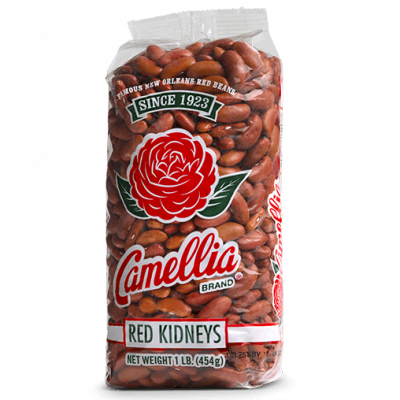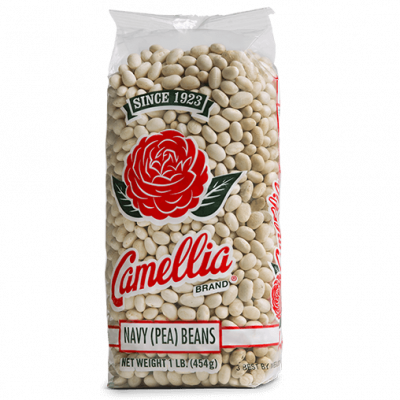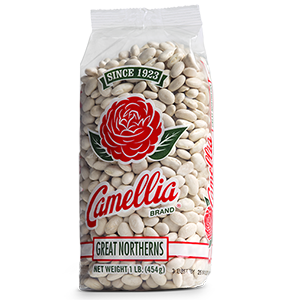Galatoire’s and Its Secret Suppers

“An army marches on its stomach,” Napoleon Bonaparte once declared.
And so does the army of service professionals who maintain one of New Orleans’ — and America’s — most treasured culinary institutions: Galatoire’s.
What is the secret ingredient that fuels their daily march toward gustatory excellence? The late-afternoon staff dinners, which employees refer to as the “family meal.”
While legions of bon vivants dine on the signature French Creole dishes that made Galatoire’s legendary — such as Trout Marguery, Pompano Meuniere, Eggs Sardou, Godchaux Salad, Crabmeat Yvonne, Oysters en Brochette, and Shrimp Remoulade, to name just a few — the staff itself feasts on hearty, mostly off-the-menu fare prepared by the same kitchen crew that satisfies paying customers’ tastebuds.
What combination dish arguably reigns supreme at the Galatoire’s staff meal? Red beans and rice paired with fried chicken.
Galatoire Descendant: “Beans Are Perfect”
“Obviously for a staff meal you want something tasty, you want to keep your employees happy, and you want to keep them well-fed,” opined David Gooch, a member of the Galatoire family and former general manager. “And you need something that’s reasonably priced. That’s why beans are perfect. Beans are delicious, cheap, but they taste very good and they’re filling. Chicken is very reasonably priced. … You try to keep your soldiers healthy and happy and well-fed — and our employees, too. When you have a happy employee, you have a happy customer.”
Although Galatoire’s has never offered red beans and rice on its official menu, preferring to focus on the more highfalutin jewels of French-inspired Louisiana cuisine, Gooch himself doesn’t turn up his nose at Louis “Satchmo” Armstrong’s favorite dish. “My family, we cook beans at home just like everybody in New Orleans does. We do red beans on Monday just like most people do, but … other days of the week too.”
How does Gooch, who worked in the Galatoire’s kitchen for four years in the early ‘70s, do his beans? “I like a little extra butter, and I do put a dash of ketchup in it. Not too much, but I do like a little. The sweetness of the ketchup adds to it for me. And a little bit of butter adds to the richness. But of course they have to be cooked way down. I like them thick, creamy. Ham hocks, sausage, smoked sausage — I don’t like anything too spicy in sausage.”
“Tuesday Was Always Our Monday”
Ironically, although red beans and rice are synonymous with Mondays in New Orleans, they’ve never been served to the Galatoire’s staff on that day — for an obvious reason: The restaurant is closed Mondays.
And while red beans and rice are now served on Saturday, it wasn’t always so. The 2004 book “Galatoire’s: Biography of a Bistro” by Marda Burton and Kenneth Holditch describes how cook Wallace “Wally” Shelby, who started out as a busboy in 1947, spent his twilight years there:
“Wally still works strictly from memory, and now works a limited schedule, preparing the staff’s meals. When the food is ready he calls ‘Fooooooood Oooooooout!’ Red beans and rice is one of his specialties. Since the restaurant is closed on Monday, ‘Tuesday was always our Monday, so I cook red beans on Tuesday’ — red beans and rice being the traditional Monday dish in New Orleans. Often regular customers ask for a dish of it.”
With Shelby since retired, 36-year Galatoire’s cook Fernando Guiterrez now whips up most of the staff meals but doesn’t recall when Saturdays became red-bean day at Galatoire’s. A native of Managua, Nicaragua, Guiterrez learned to cook at a young age. “My mother, she used to have a restaurant, and I grew up just watching what she was doing.”
How does Guiterrez prepare the red beans? “It’s regular red beans, Camellia. Yeah, we get the big sacks. We just cook 5 pounds every Saturday for all the employees. We use pickled meat, smoked sausage, and ham, and the rest is vegetables, like onions, celery, bell pepper.”
Guiterrez adds his own special mojo to the flavor. “I make my own Creole seasoning. We use all the spices, everything ground like garlic, onion, cayenne pepper, black pepper, white pepper, salt, paprika.”
“One of the Favorite Meals Anywhere”
Family meal occurs daily around 4 p.m., with cooks, waiters, bartenders, porters, hostesses, and managers lining up, filling their plates in the kitchen, and taking seats in the main dining room, or else fanning out to tables in the adjoining restaurant, Galatoire’s 33 Bar and Steak. Others eat in the kitchen or standing up in the hallway behind the dining room’s central-control desk.
“It’s good, always good,” longtime maitre’d Arnold Chabaud observed while eating on his feet. “A staple of New Orleans, red beans and rice. It was only on Monday that they made red beans because you put a pot of red beans on. It would last all day while your laundry got done the rest of the day. That’s how it came to be. Most restaurants were closed on Mondays too. That’s why I think red beans were a big hit.”
“Anywhere you go around New Orleans, this is one of the favorite meals anywhere: red beans, rice, and chicken,” said porter Reggie Johnston, leaning against a kitchen wall, plate in hand. Commenting on the Camellia product, Johnston noted, “That’s probably one of the most popular beans here in New Orleans. That’s THE bean, yeah you right.”
“This is one of the best staff meals in the city,” waiter (and WWOZ disc jockey) Michael Dominici enthused. “Good, solid red beans, which keeps you nourished for the afternoon, and for a busy shift, it’s a perfect meal. It’s also very New Orleans to have red beans — a continuation of a New Orleans cultural thing to have red beans and staples like that. Most restaurants don’t take the time to prepare a really soulful, substantial meal like that.”
Sitting at a table in the main dining room, waiter Chris Evangelista Torres explained how his personal embellishments to the dish before him pay homage to his Puerto Rican roots. “I Latinize my red beans with cheese, green onion, and — as an ode to my childhood — my grandmother would put capers in her beans. I do the same.”
The Best Fried Chicken In Town? You Be the Judge
The other half of Saturday’s staff meal, the fried chicken, also has its devoted fans — among both the staff and the public. The golden crispy yardbird is not on the regular Galatoire’s menu but is available by request, with some waiters suggesting an accompaniment of Crab Maison, Shrimp Remoulade, and a side of brabant potatoes. “Our customers claim it’s the best fried chicken in town,” Arnold Chabaud confirmed. “The chicken is the best,” seconded Robert Engelhardt, head bartender at Galatoire’s 33. “Saturday-night chicken is my favorite, personally.”
White Beans That “Melt in Your Mouth”
Fernando Guiterrez cooks a variety of other dishes for staff meals, including blackeye peas, tacos, beef stew, and Salisbury steak. Another favorite is his white beans, served about every other Tuesday. “We call it butter beans,” he said. “We use the big ones. … It’s a big difference (from cooking red beans). They have bacon. You sauté bacon after you sauté onions and you don’t put a lot of vegetables, just onions and bacon and parsley. You use seasoning.”
“Spectacular,” Chabaud said of the white beans. “It’s a great dish. It’s creamy, soupy, delicious. I have one waiter here that does — it’s like a soup. He takes the beans and smashes them and he puts the liquid on and it comes out like a soup. He loves it.”
The white beans are a “special treat,” Robert Engelhardt said. “We get the red beans — they’re awesome. But you get the white beans as a special treat because those are just as nice. They’re just creamy; they melt in your mouth. Beautiful.”
And one of the most distinctive foods served at the Galatoire’s staff meal is yakamein soup, a dish virtually unknown outside of New Orleans but sharing recognizable characteristics with several ethnic cuisines. Legend has it that yakamein descends from recipes brought by Chinese immigrants of the 19th century, and it also resembles the pho that is the mainstay of New Orleans’ large Vietnamese community and its restaurants.
But modern-day yakamein is found mainly in African-American neighborhoods, with its most famous proponent being Linda Green, “The Ya-Ka-Mein Lady.” Some food historians attribute the dish’s introduction stateside to African-American soldiers who developed a taste for noodles during the Korean War. “It’s a traditional New Orleans dish in the black community,” Chabaud explained. “It’s a lot of substance for little money.”
Join Galatoire’s Now for “We Live To Eat Restaurant Week”
Except for the fried chicken, most of the grub served at the Galatoire’s family meal won’t be coming to your table there (unless you have the right waiter — wink, wink). However, you can always count on savoring any number of the countless iconic dishes that helped earn Galatoire’s the 2005 James Beard Foundation Award for Most Outstanding U.S. Restaurant.
The perfect time to visit Galatoire’s is now, during the Sept. 14-20 “We Live To Eat Restaurant Week” celebrations, sponsored in part by L.H. Hayward and Company, the packager of Camellia Brand dry beans, peas, and lentils. Galatoire’s and Galatoire’s 33 are joining dozens of local restaurants across the metro area in offering special menus to encourage diners to get out and experience New Orleans’ unique culinary heritage while supporting the restaurant industry, a huge cog in Louisiana’s economy. If this is where you’re at, don’t just eat to live — live to eat. And Galatoire’s is a wonderful place to start.






